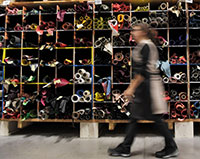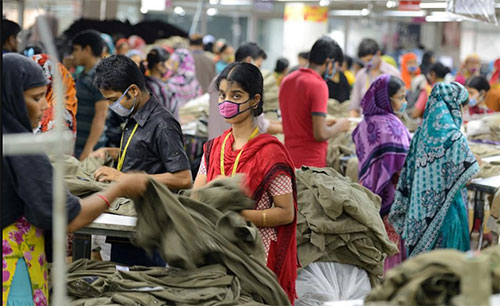"From top fashion brands like H&M and Gucci to small fabric companies, all fashion lovers are making conscious efforts to reduce the colossal amount of waste filling our landfills every year. Luxury brand LVMH Moët Hennessy Louis Vuitton recently signed a five-year biodiversity partnership with UNESCO, committing to an ambitious set of environmental goals."
 From top fashion brands like H&M and Gucci to small fabric companies, all fashion lovers are making conscious efforts to reduce the colossal amount of waste filling our landfills every year. Luxury brand LVMH Moët Hennessy Louis Vuitton recently signed a five-year biodiversity partnership with UNESCO, committing to an ambitious set of environmental goals.
From top fashion brands like H&M and Gucci to small fabric companies, all fashion lovers are making conscious efforts to reduce the colossal amount of waste filling our landfills every year. Luxury brand LVMH Moët Hennessy Louis Vuitton recently signed a five-year biodiversity partnership with UNESCO, committing to an ambitious set of environmental goals.
However, adopting systems and practices that make a difference, is easier said than done. As the annual ‘Pulse of the Fashion Industry’ report indicates, the rate of this improvement is slow as economic and technological issues prove a major hurdle. The report says, around 15 per cent of the global fashion industry is yet to embrace any responsible practices.
Sustainability penetrates the fashion industry
As per Nate Herman, Vice President of the supply chain at the American Apparel and Footwear Association (AAFA), sustainability was first adopted by outdoor clothing makers. The trend has now penetrated to every part of the industry as brands have learned new ways to reuse their products.
(AAFA), sustainability was first adopted by outdoor clothing makers. The trend has now penetrated to every part of the industry as brands have learned new ways to reuse their products.
Unifi, a North Carolina-based manufacturer of synthetic yarns, launched a recycled polyester yarn, Repreve, in 2007. The brand opened its own recycling center in Yadkinville, North Carolina, in 2010. In 2014, it expanded its operations and opened a Repreve-dedicated bottle processing centre in 2016. In 2018, the company partnered with the Mercedes Benz Stadium, Georgia Aquarium, and Atlanta International Airport to recycle bottles. Till date, the company has recycled 14 billion plastic bottles into jackets.
Demand for recycled materials fuels expansion plans
Textile manufacturers are expanding their operations on basis of demand for these recycled materials. Aquafil, an international textiles producer with headquarters in Italy, makes and markets Econyl, a nylon yarn made from industrial and household waste. This yarn, manufactured from materials as diverse as fishing nets and discarded carpets, has been used by more than 600 fashion brands, including high-end designers like Gucci and Stella McCartney. Last year, Aquafil recycled five million pounds of nylon and other materials. The company now aims to double this quantity by 2021.
Growing preference for green chemicals
Fashion companies are no longer relying on harmful chemicals like mercury dyes and formaldehyde finishes. Some of them are recycling and reusing petroleum-based products such as polyester fabrics. In 2007, Patty Grossman with her sister, Leigh Ann Van Dusen, developed Two Sisters Ecotextiles, an eco-friendly textiles manufacturing company based in Seattle. The company only produces natural and cellulosic fibres. Its certified dyes don’t have too much copper in them.
The 20th edition of AAFA published its list of restricted substances earlier this year. The list features 250 chemicals. However, according to Herman, many of these alternatives haven’t been tested yet. Brands have thus failed in their efforts to decrease the environmental footprint around synthetics.












